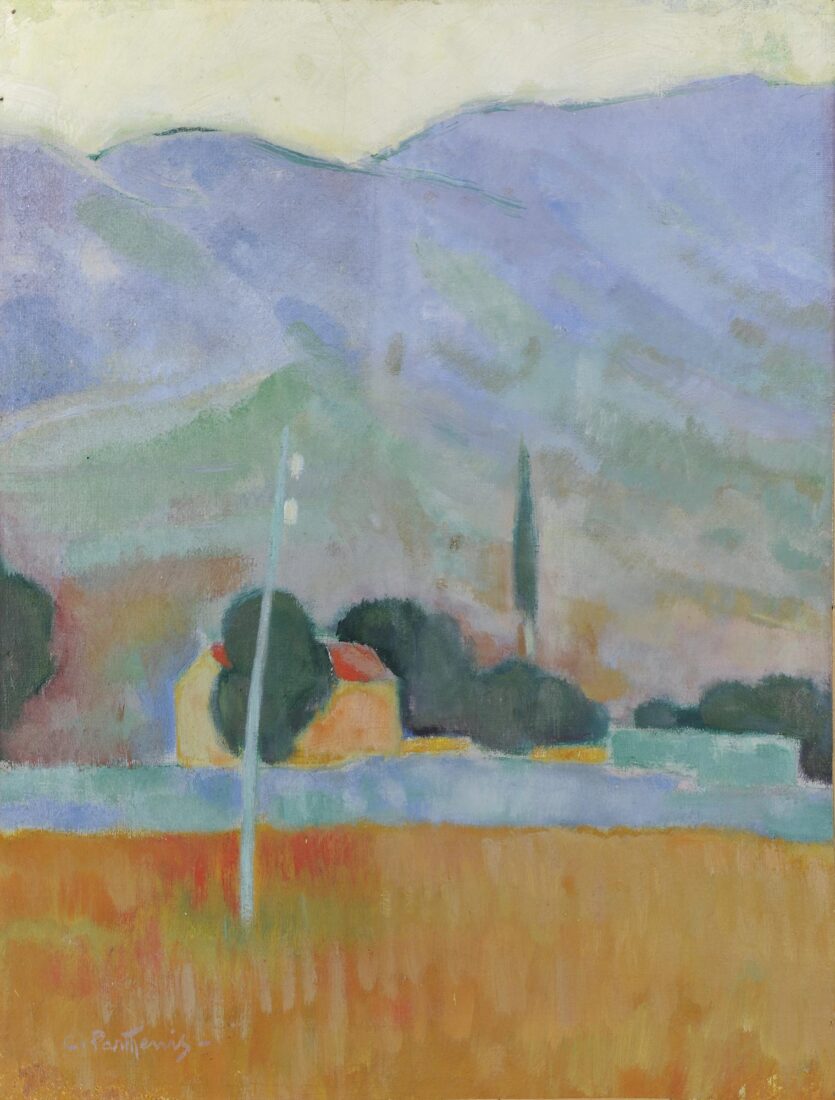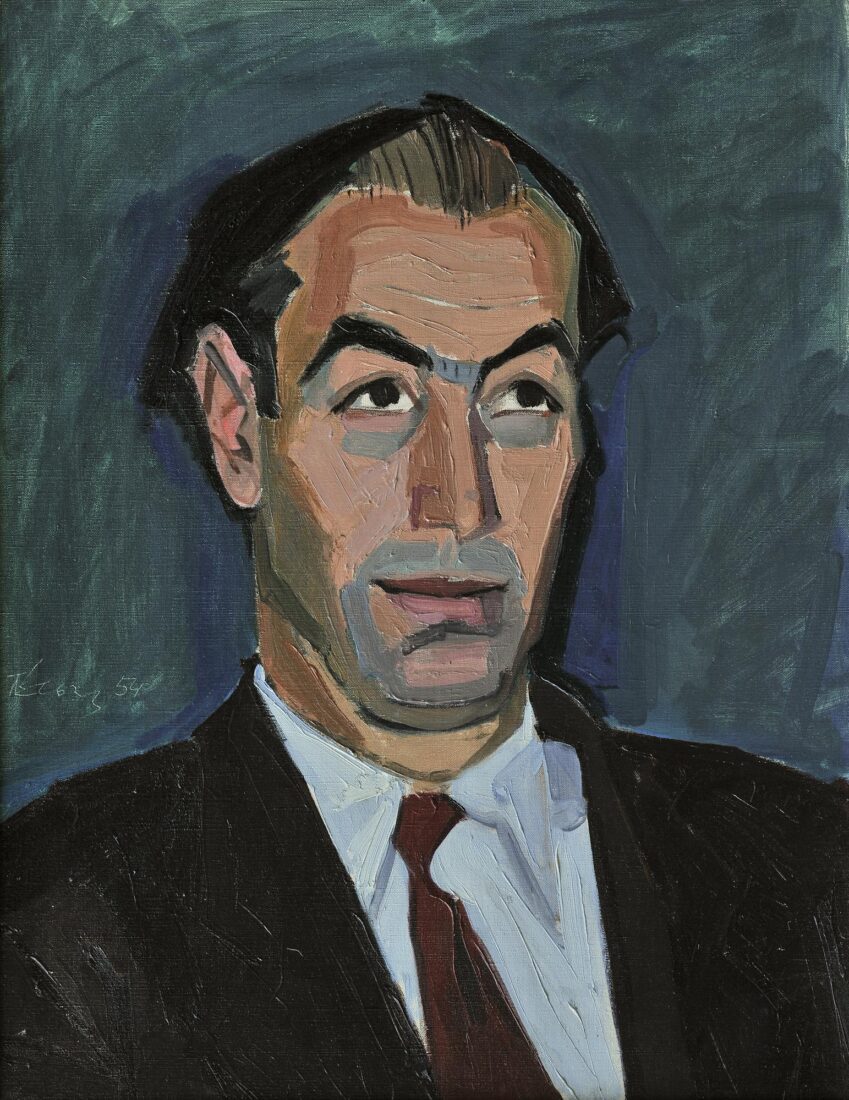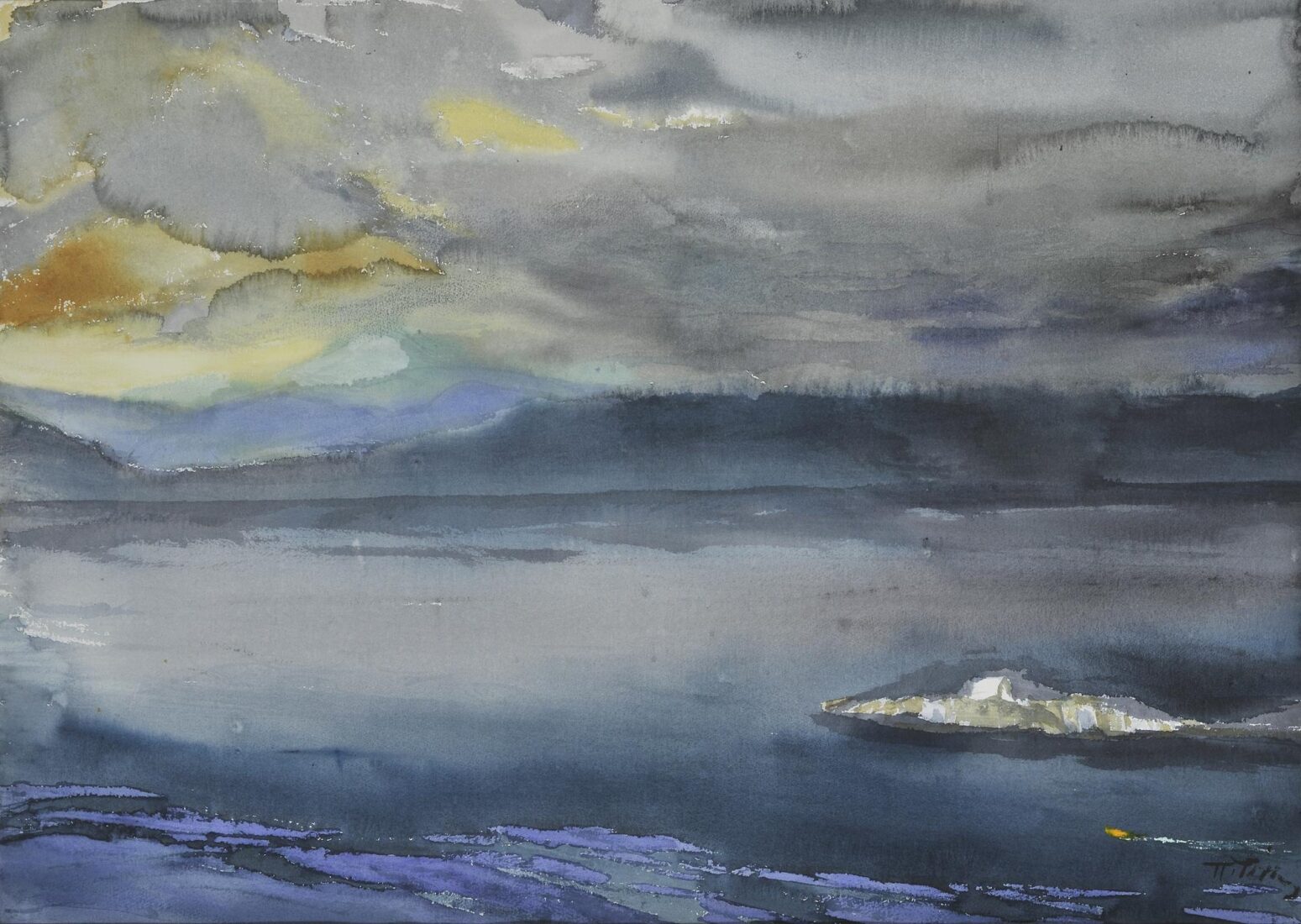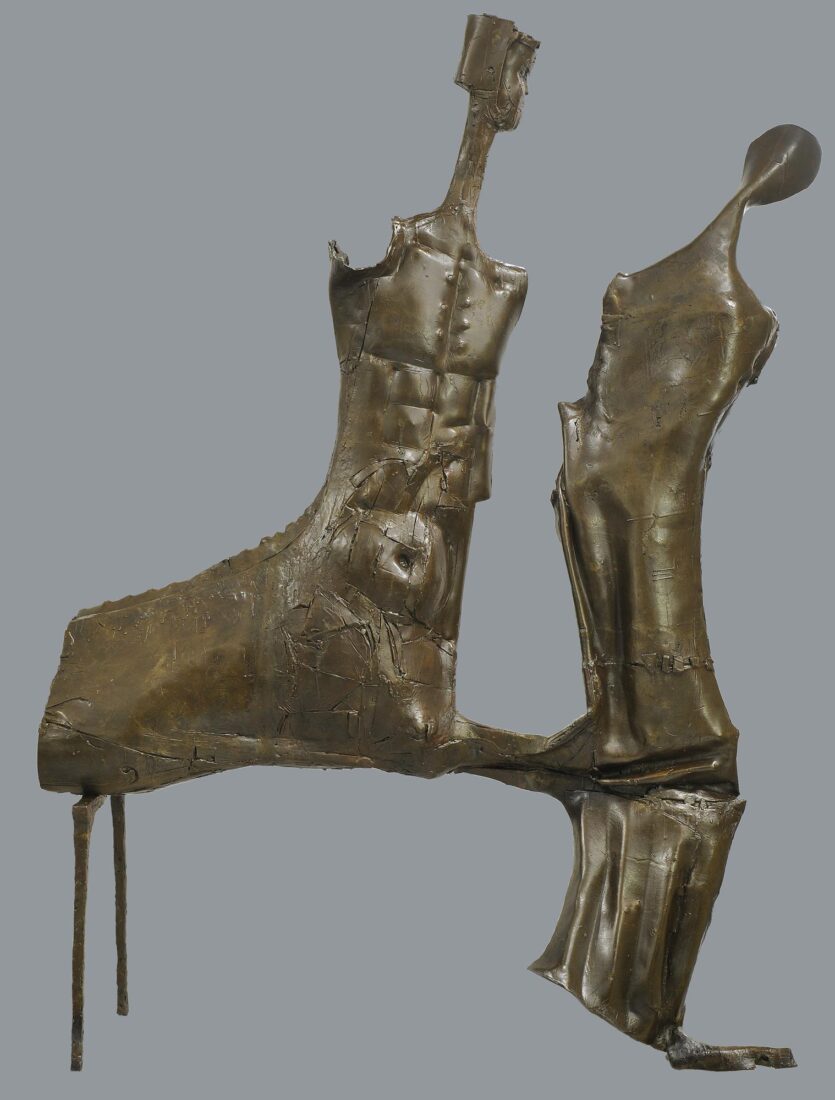





Yannoulis Chalepas was an extraordinarily gifted artist. Yet, his life and career as an artist were branded by the outbreak of a mental illness, which led to his institutionalisation at the mental hospital on Corfu and to a 40-year hiatus in his work. The first symptoms of a deviating behaviour became manifest in 1878, at which time the first period of his creative production came to an end.
During that period, Chalepas was thematically inspired by the Greek Antiquity and mythology, in accordance with the neoclassical spirit which prevailed in 19th-century Greek sculpture. “Satyr Playing with Eros” is a characteristic work in this respect. It is, moreover, the first of 12 related works made by the sculptor.
In this first variation, Chalepas created an open, multi-axial composition of vivid motion, reminiscent of Hellenistic art, able to be viewed from multiple points, characteristic of his work in general. Neoclassical elements can be identified in the nudity of the figures, the rendering of the eyes without pupils and irises, as well as in the soft, almost impeccably polished surface of the marble, which enables the light to glide smoothly. The tender body of Eros is projected upon the shadow of the Satyr’s breast. Contrary to many images depicting satyrs as repugnant old men, Chalepas chiselled the figure of an adolescent, whose dual nature is only evoked by a short tail at the base of the spine, the pointed ears and the two small horns, which can barely be seen high on the forehead.
The first effect created by the work is of a joyful scene, full of innocence and insouciance. Yet, upon a closer look, it becomes apparent that the Satyr’s grin is a mocking one, and his expression is cruel and disparaging. It is in vain that little Eros is trying to reach for the grapes.
What is evoked here for the first time is the sculptor’s relationship with his father. Chalepas’s father had been opposed to his son’s artistic vocation right from the start. From 1918 until 1936, Chalepas made 11 more works on the theme of Satyr and Eros in clay or plaster. These works reflect Chalepas’s gradual liberation from the tyrannical figure of the father.












![[Moon Landscape], Lebanon](https://www.nationalgallery.gr/wp-content/uploads/2025/01/77747_2000_2000-1663x1100.jpg)




After the 16th century the Adoration of the Shepherds became one of the painters’ favorite themes in the Low Countries, while during the 17th, and particularly in Rubens’s work, it was enriched with the presence of female figures. According to the Evangelist Luke (2, 15-21) “Hastering there, the shephers found Mary, Joseph and Infant, lying in his crib”. In his work Jordaens depicts the moment when the shepherds, the young shepherds and shepherdesses are adoring the Holy Infant. The infant, however, is not in his crib but rather asleep in his mother’s arms. The composition is focused on the human relationship between mother and child. Wrapped in a blue cloak, the Virgin Mary is tenderly holding her baby, who, serene and secure, sleeps on her shoulder. Her head turned to the side, in the pose known as “Our Lady Sweetly-Kissing”, it rests on his forehead. The two of them appear to be cut off from all that is going on around them. Joseph is standing behind her while the donkey next to him indicates the participation of the animals in the scene. To their left a group of shepherds, young shepherds and shepherdesses are gazing devoutly at the Divine Infant. Indeed, one shepherd on the primary plane is offering him a bowl of milk while a woman to the rear is bringing a rooster in a farm basket. The scene takes place at night and is lit by a candle held by a young shepherd on the left. Its light spreads over the faces of the two central figures creating a delicate chiaroscuro effect which infuses the main theme with a sense of tranquility. Conversely, there are strong contrasts of light and shadow on the shepherd’s faces, thus increasing the feel of mystery this moment is imbued with.
The similarities between this work and the one at the Metropolitan Museum of Art in New York (“The Holy Family with Shepherds”) from 1616, lead us to the conclusion that this must have been done around 1615-1616. The composition, furthermore, follows the example set by Italian art, which was well-known in Antwerp, especially after Rubens returned from Italy, and this was the style Jordaens painted in, at least in the early stages of his career.



